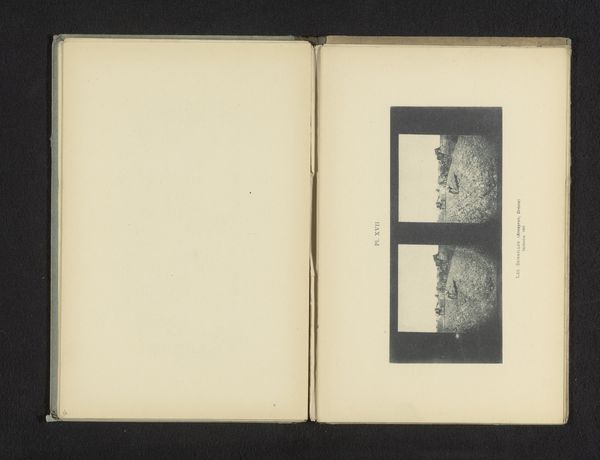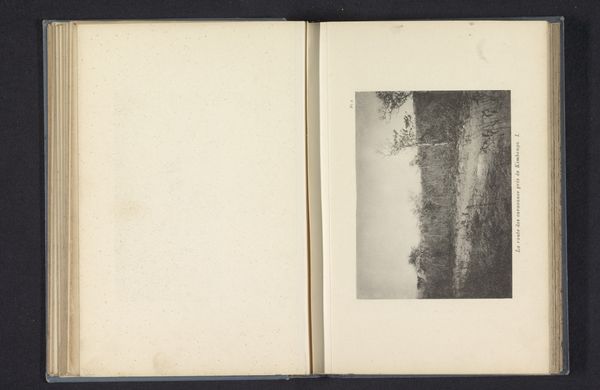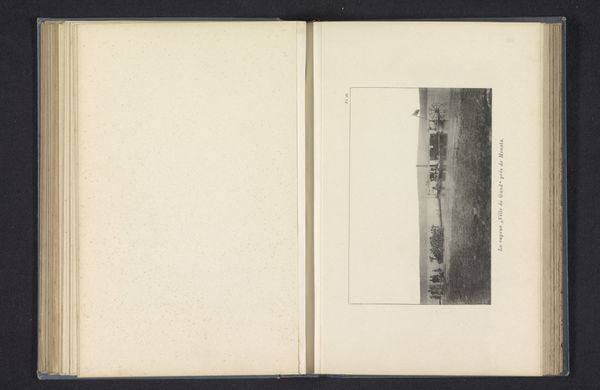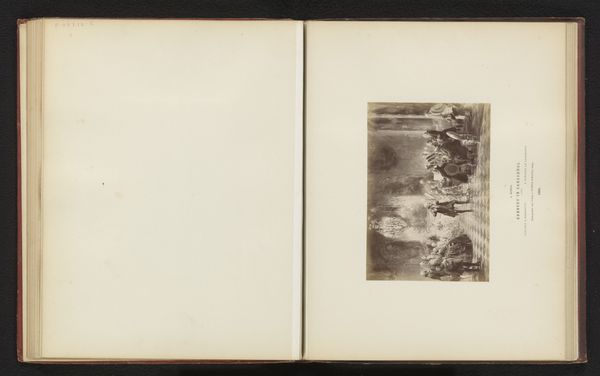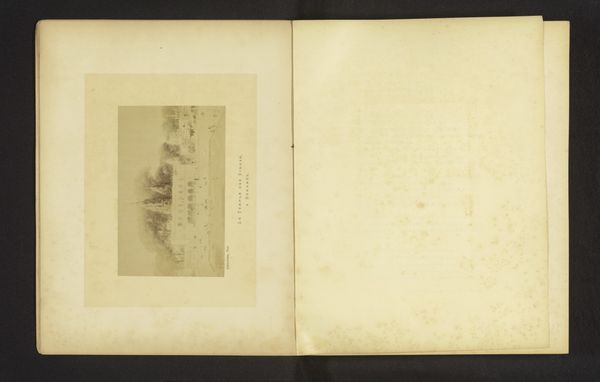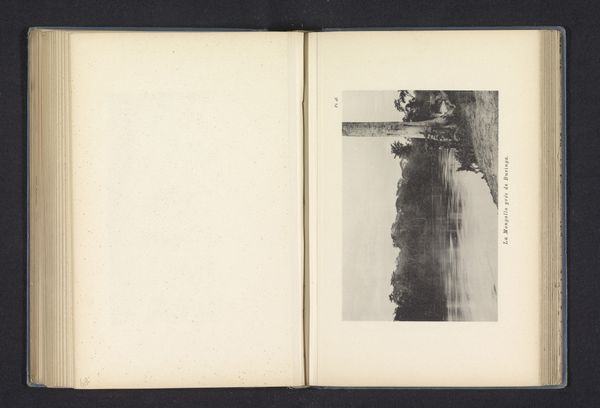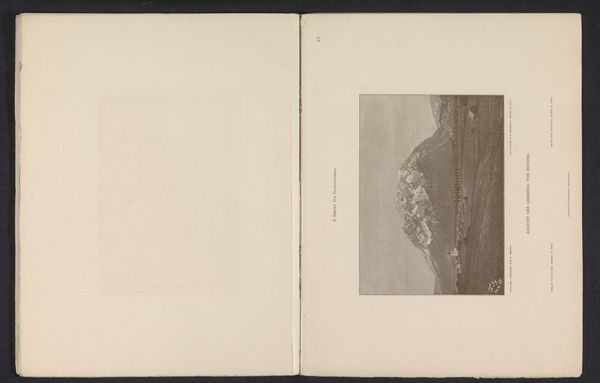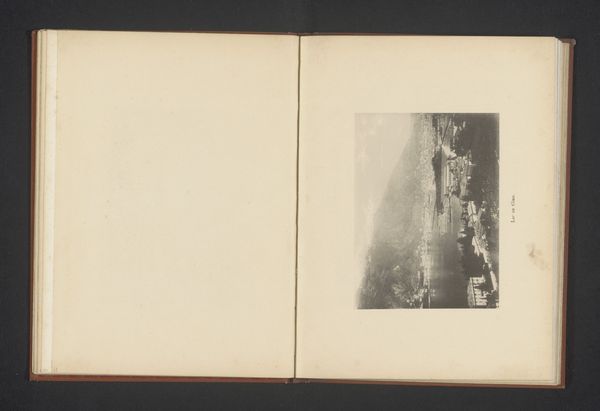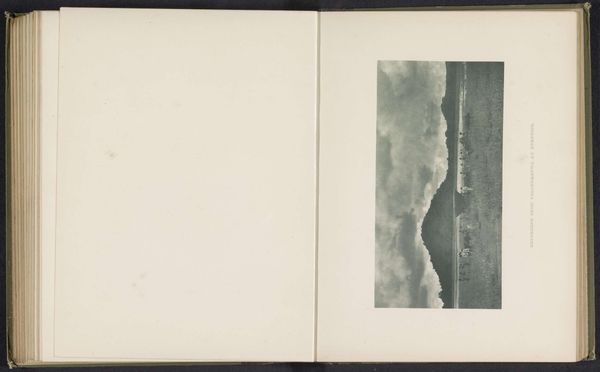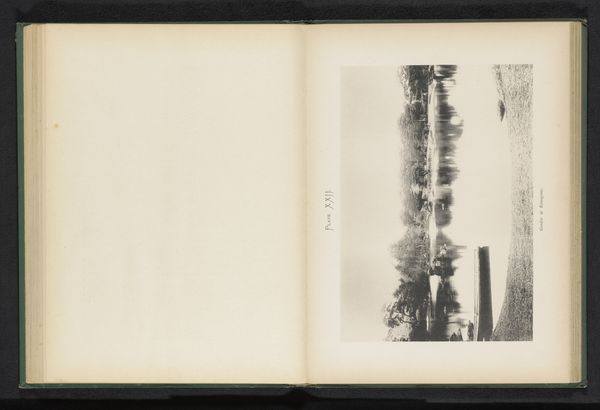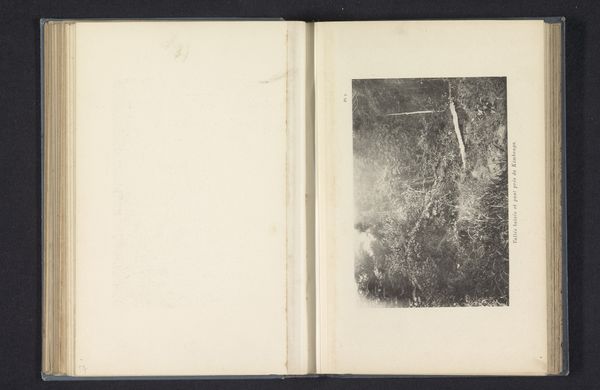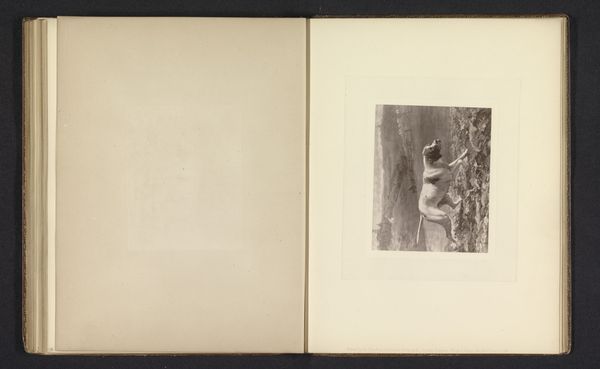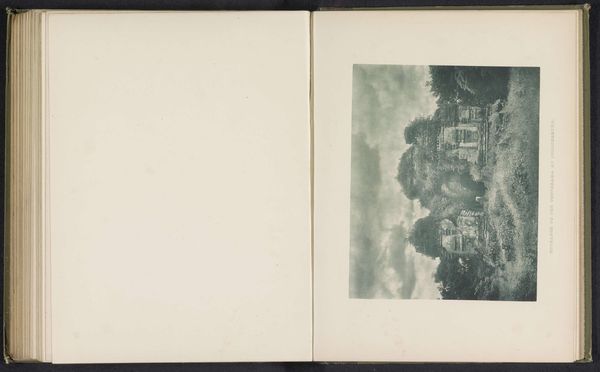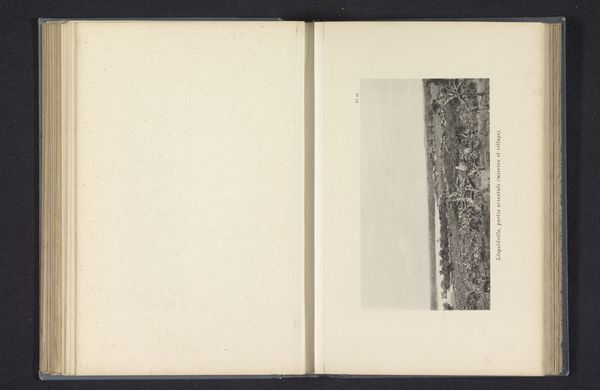
Dimensions: height 135 mm, width 213 mm
Copyright: Rijks Museum: Open Domain
Curator: Looking at this gelatin-silver print by Léonard Misonne, created before 1898, titled "Vier boerinnen aan het werk op het land," or "Four Peasant Women Working in the Field," one is struck by its almost dreamlike, pastoral quality. Editor: There’s something profoundly melancholic about the composition. The hazy light seems to soften every edge, almost to the point of obscuring the figures entirely. Curator: The hazy effect definitely enhances the feeling. We have to consider the conditions under which rural women toiled at the turn of the century. This photograph could be interpreted as highlighting the thankless labor they often endured, not unlike other Realist portrayals by Millet or Courbet. Editor: Yes, and note the light—how Misonne plays with contrast, but it remains soft-focus, creating a textured surface. The horizon is muted and seems to blend with the sky, pushing our focus onto the bodies of the women. Are they anonymous, subsumed into their toil? Or, are their shared actions a binding force? Curator: Considering photographic technology in this period, Misonne certainly demonstrates artistry, especially his sensitivity to the atmospheric perspective. Also, what might be read as anonymity could also emphasize solidarity and collective labor of women within agrarian society. We see women constantly yoked together by their familial and social roles. Editor: I suppose I read more into the abstraction. To me, these figures are presented in almost an allegorical format. And the flatness of the print overall gives them symbolic meaning over material. The texture feels applied. The artist seems interested in ideas of "peasant women," more so than these peasant women, in and of themselves. Curator: I find your focus on symbolic readings so fruitful, because it enhances the narrative of exploitation that undergirds seemingly romanticized rural scenes like these, revealing not just the work, but the systemic societal constraints acting upon women. Editor: It also opens avenues into reading the artist’s vision—to what extent are they presenting their personal experience versus filtered interpretation? Thank you. Curator: Absolutely, considering Misonne's artistic influences illuminates the subjectivities through which photography renders supposedly “objective” scenes, thus reframing what we understand by simply seeing.
Comments
No comments
Be the first to comment and join the conversation on the ultimate creative platform.
